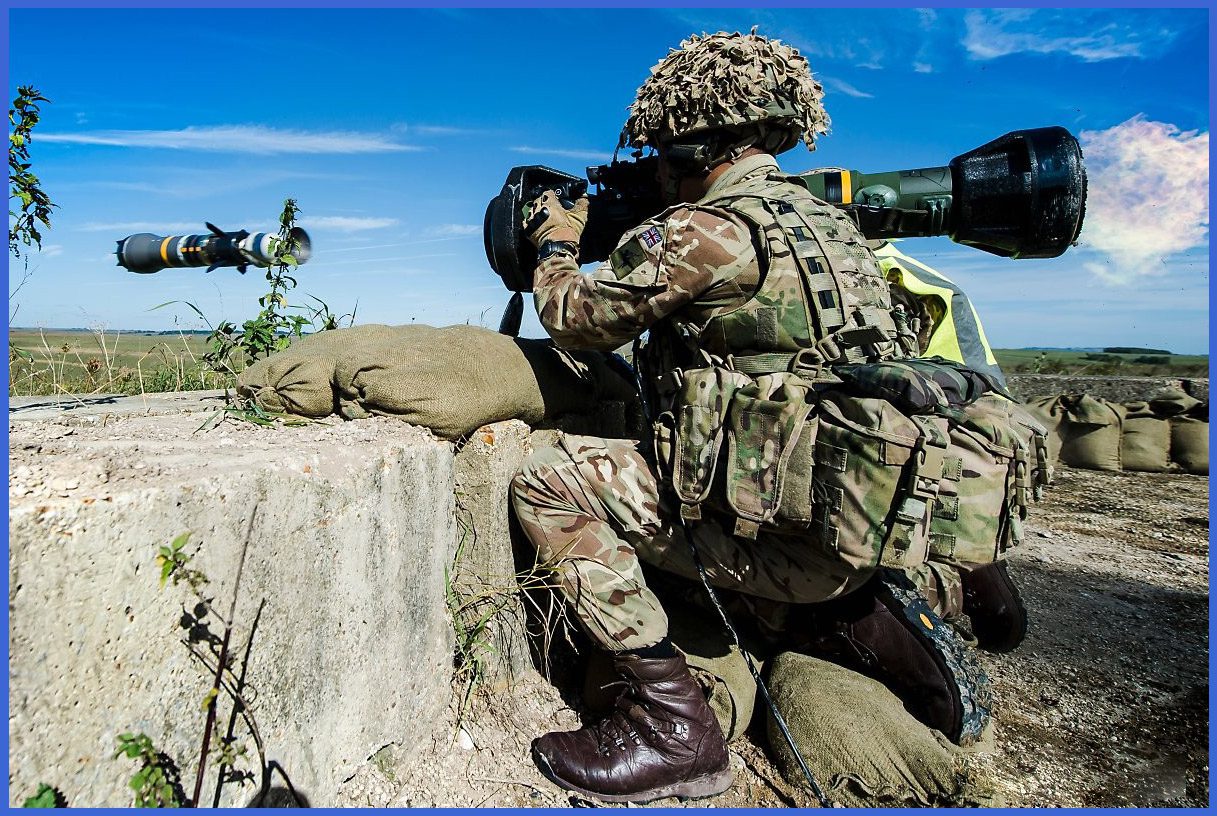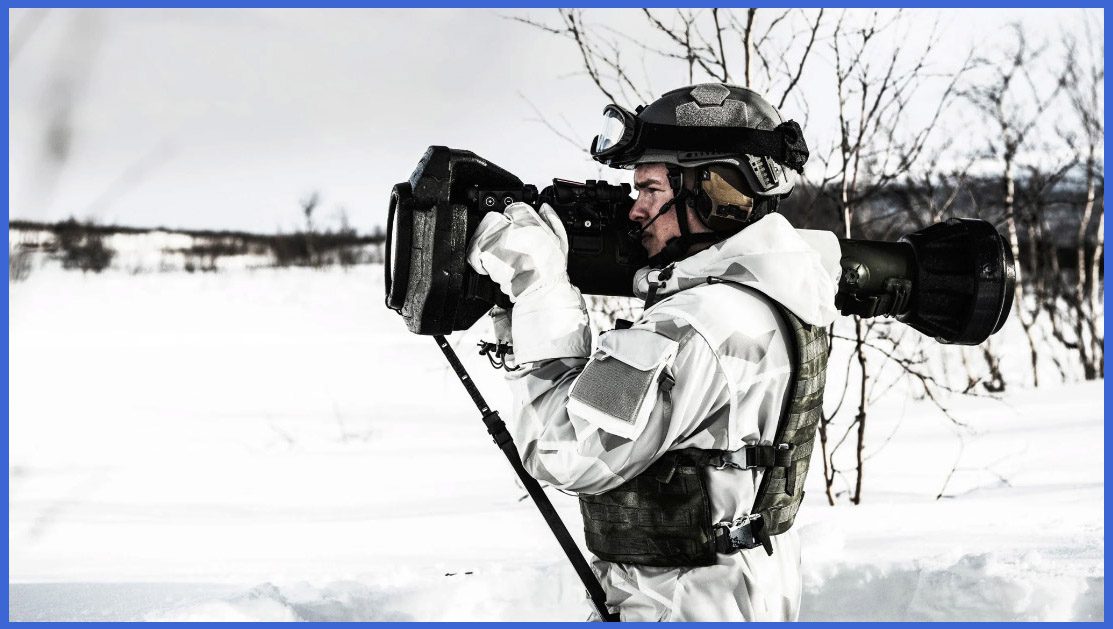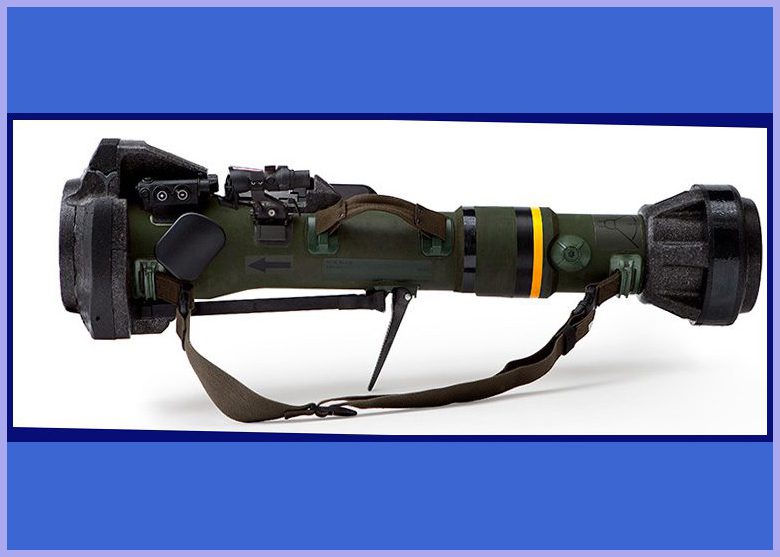The NLAW (Next Generation Light Anti-Tank Weapon) stands out as a portable and disposable anti-tank weapon system explicitly created for close combat scenarios. Explore the Best of NLAW Anti-Tank Weapon System, a mechanism engineered to swiftly disable any Main Battle Tank (MBT) with a single shot, precisely targeting it from above. The Saab Bofors Dynamics NLAW represents a fire-and-forget, lightweight shoulder-fired, and single-usage Line Of Sight (LOS) missile system, intricately designed for infantry use.

The NLAW distinguishes itself with its simplicity, compact dimensions, and user-friendly operation. Featuring a fire-and-forget capability, it empowers the operator to target, launch the missile, and swiftly seek cover. Employing a soft-launch system, the missile is guided by a predicted line of sight (PLOS) and equipped with a HEAT warhead for increased armour-penetrating capability. Its effectiveness extends to armoured vehicles and tanks, enabling an overfly top attack (OTA) on armoured vehicles or a direct attack (DA) on structures and non-armoured vehicles. This affords infantry units a versatile and robust tool on the contemporary battlefield.

Its lightweight construction and user-friendly features render it a valuable resource for agile and adaptable anti-tank capabilities within infantry forces. The system originated in Sweden, developed by the primary contractor Saab Bofors Dynamics, acting on behalf of the British and Swedish defence authorities who acquired the system through a collaborative venture. The majority of the production took place in the United Kingdom under the auspices of Team MBT LAW UK, comprising 14 subcontractors, with Thales Air Defence being a prominent contributor.

Development of the NLAW Anti-Tank Weapon
The development of the NLAW aimed to create an advanced, man-portable anti-tank weapon system designed for modern infantry use. In 1997, the British Defence Procurement Agency (DPA) initiated the process by inviting tenders for a new man-portable anti-tank weapon to replace the ageing British arsenal. The project likely commenced with a thorough analysis of contemporary battlefield requirements and the evolving threats posed by armoured vehicles.

In May 2002, Saab Bofors Dynamics’ MBT LAW emerged as the winner over Matra BAe Dynamics’ Kestrel in the NLAW program. The system was developed in Sweden and manufactured in the United Kingdom, with final assembly undertaken by subcontractor Thales Air Defence. The two collaborating partners established a marketing agreement, allowing potential customers to procure the system from either Saab Bofors Dynamics or Thales Air Defence.

Upon the finalization of agreements between Sweden and the United Kingdom in 2003, both nations jointly bore the development costs. The system’s development persisted until 2008, at which point it transitioned to production in the UK. Weapon deliveries commenced in late 2008, and it officially entered service with the Swedish, Finnish, and British armed forces the subsequent year.

The UK’s demand for the British Armed Forces was estimated to be 14,000 units or more, effectively replacing the outdated LAW 80 system and the AT4 CS. In 2005, the Swedish government initiated the procurement process with an initial order of 2,000 units from Saab. Finland subsequently placed three orders between 2007 and 2017, totalling 3,000 units. Following suit were Luxembourg, Indonesia, Malaysia, and Switzerland. As of 2023, it is estimated that more than 25,000 have been manufactured

Design Features of the NLAW Anti-Tank Weapon
- Delivering Anti-Tank Superiority: The NLAW, a one-man portable system, empowers infantry to swiftly eliminate the most advanced Main Battle Tanks (MBTs) with a single shot, wherever and whenever they appear within combat range. The NLAW incorporates well-established technologies, including warhead, guidance, fuze, confined space, and insensitive munition. Recent enhancements, coupled with the latest state-of-the-art advancements, have resulted in a formidable and accurate anti-tank missile system.
- Exceptional Technologies: Predicted Line Of Sight ( PLOS ) _ The soldier tracks the target for a few seconds before firing. The missile’s guidance electronics record the soldier’s aiming movement and calculate the predicted target route and flight path from the missile system to the target.

- Engagement Modes: When facing tanks and armoured targets, the Overfly Top Attack (OTA) mode is employed. In this mode, the missile travels approximately one meter above the line of sight, and the warhead initiates above the target’s roof—the most vulnerable part. Conversely, when dealing with non-armoured targets, the Direct Attack (DA) mode is activated. In this mode, the missile travels along the line of sight, the sensors disengage, and the warhead initiates upon impact.
- Tactical Advantage: Full Effect On Target _ NLAW is optimised to destroy modern MBTs with add-on-armour despite the brevity of visibility or size of the target area. Using the proven OTA technology with an advanced fuze system, the missile always has a ” Fill-size-target” seen from above and strikes through the roof. The reliability and precision of NLAW enhance survivability on the modern battlefield.

- As Simple as Aim and Fire: The NLAW employs cutting-edge technology to maximize its impact upon contact and to address typical firing challenges like range estimation, wind direction, and target speed. The weapon seamlessly integrates with night vision goggles and other clip-on night vision devices. Years of expertise in developing shoulder-launched weapon systems have yielded an ergonomically optimized and instinctive weapon, boasting an exceptional Single Shot Kill Probability (SSKP).
- Rational In Use: Easy to Integrate _ NLAW, a maintenance-free, disposable weapon is easy to integrate into existing operational and maintenance organisations. The system enables combat units to act with a true tank killing capability, down to individual soldier level in any scenario or environment.

- Low-Risk Investment: The NLAW presents a low Life Cycle Cost (LCC), with the majority of expenses allocated to procurement, minimizing concealed costs such as additional operation and support expenses. Utilizing proven and enhanced technologies, the system fulfils the stringent requirements of Swedish and British procurement agencies.
- Combining the Best Capability: The NLAW integrates the simplicity of light anti-armour weapons with the advantages of heavy, crew-operated guided missile systems. It enables the destruction of a Main Battle Tank (MBT) upon target detection without the need for a larger system, loading the weapon, and, in some cases, completing a lock-on-to-launch sequence. NLAW provides individual modern soldiers with a one-shot weapon capable of stopping and destroying almost any target, offering invaluable support to other weapons and contributing to the overall effectiveness of the combat unit.

Specifications of the NLAW Anti-Tank Weapon System
- Weight: Approximately 13 kg (28.5 lb), including a warhead weighing 1.8 kg (4.0 lb)
- Length: 3 ft 4 in (1.3 m)
- Diameter: 5.9in (150 mm)
- Calibre: 5.9 inches (150 mm) for the warhead and 4.5 inches (115 mm) for the rest of the missile body
- Firing Range: 20m – 800m
- Muzzle velocity: Initial soft-launch speed of 40 m/s (130 ft/s) and a maximum speed of 200 m/s (660 ft/s) upon hitting the target
- Guidance principle: PLOS ( Predicted Line Of Sight )
- Attack modes: Selectable OTA/DA
- Warhead: Single-shape charge HEAT
- Detonation: Utilizes a Proximity Fuze for Overfly Top Attack and a Contact Fuze for Direct Attack
- Armour penetration: Around 500 mm (20 in)
- Confined space capability: Yes
- Launch Platform: Man-portable launcher
- Preparation time approx: 5 seconds
- Guidance: PLOS (Predicted Line Of Sight)
- Intensive munition: Yes
- Shelf life: 20 years
- Unit cost: Domestic cost estimate for FY 2008: US$30,000–40,000

In conclusion, the NLAW serves as a testament to the ongoing evolution of infantry capabilities in response to the challenges of modern warfare. Developed by Saab Bofors Dynamics, this portable anti-tank weapon system epitomizes innovation with its compact design, user-friendly operation, and advanced technologies.
The development of the NLAW reflects a strategic initiative to enhance mobility and effectiveness for infantry forces, ensuring their adaptability and responsiveness in dynamic combat scenarios. Its legacy is defined by its capacity to provide a reliable and powerful solution, emphasizing the significance of technological advancements in shaping the landscape of contemporary warfare.
Important Announcement for Our Valued Readers!
After an article is published, it is possible that updates or changes may have occurred beyond the time of publication. Therefore, it is important to be aware that certain information in the article might be outdated. To ensure the most accurate analysis, it is highly recommended to verify the content with the latest sources available.
However, we are dedicated to delivering outstanding articles on military products and global updates. Maintaining quality and smooth operation requires resources. Your support sustains our efforts in providing insightful content. By purchasing high-quality products through our affiliated links, you help us keep our platform alive and acquire top-notch items. Your unwavering support is invaluable and inspires us to strive further.
We welcome your suggestions and requests for more information, as we value feedback from our readers. If there’s specific defence material or equipment not covered on our site, please share your request in the comments. We’ll strive to research and provide the required information. We sincerely thank you for your unwavering interest in our website, and we eagerly anticipate hearing from you! Enjoy your reading experience!

2 thoughts on “Explore the Best of NLAW Anti-Tank Weapon System”